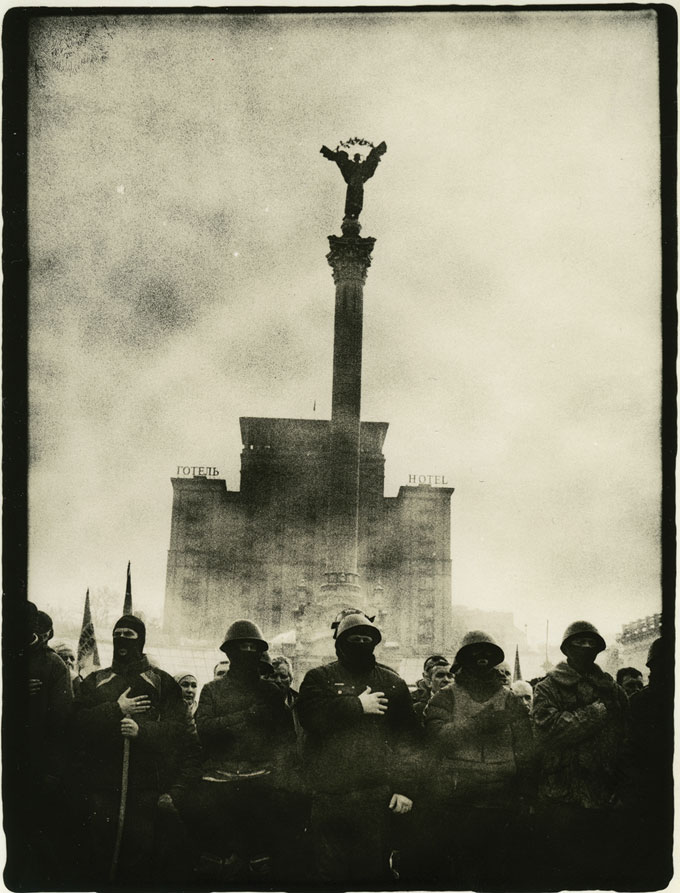Mark Pearson has shared some of the favourite photobooks that he has discovered and worked on in the past year:
1. Terayama – Daido Moriyama

The Japanese master designer Satoshi Machiguchi`s latest work, bringing together the photographs of Daido Moriyama and the writings of Shuji Terayama in a new English translation by Peter Tasker. Terayama`s central role in 1960s culture is well-established, but this is one of the few books of his writing in English. For more Terayama (and Moriyama and Nakahira) please see our Zen Foto publication “Japanese Dream by Shuji Terayama”. Essential 60s Japanese sub-culture.
2. Hong Kong – Michio Yamauchi

A new interpretation of Yamauchi`s “Hong Kong”, in his direct close-up style. Photographs of Hong Kong in the years leading up to return of the colony to China in 1997. Part of Yamauchi`s series of photographs of the great Asian metropolises, alongside Tokyo, Shanghai, Dhaka, Keelung, Seoul.
3. Police Portrait / Yau Ma Tei – Chan Wai Kwong

I moved to Hong Kong almost 2 years ago and, for me, Chan is the most interesting young photographer in Hong Kong; idiosyncratic and totally dedicated. He has made many self-published books in tiny editions, including this one of “Police”. An exhibition of this work earlier this year had to be taken down prematurely due to protests from mainland China sympathisers. This year we published his book “Yau Ma Tei”, which is a district near the southern tip of Kowloon, off the tourist track. Here, life seems to have been affected less by Hong Kong`s frenetic changes, and Chan has caught the daily life of small shopkeepers, black market operators, pimps and prostitutes.
4. Retrospecting Sandy Hill – Chris Shaw

Chris Shaw`s funny, sad and self-revealing photographs. A scrapbook made with torn-up prints and scribbled throw-away comments, reproduced beautifully by Aron Morel.
6. Chronicle – Sergiy Lebedynskyy and Vladyslav Krasnoshchock (Shilo Group)

I don`t see a lot of European photography, but this publisher impressed me when I was in Paris this year, and this book was my pick of their recent issues. “Chronicle” is a body of work taken in Ukraine during 2010-2015, printed in a bathroom on Soviet photographic paper. The result is crude and strange. Its roughness transmits powerfully the bewilderment, apprehension and fear that people must have felt during these years, as normality steadily transformed into confrontation and war.
6. Sanrizuka – Tenmei Kanoh

A series of photographs that were forgotten for almost 50 years. Mention Sanrizuka and most photography fans will think of Kazuo Kitai`s landmark work of the same name. Tenmei Kanoh is known for his nude photography, the best known of which is “Fuck”. A few years after those photographs of an orgy in an artist`s studio in the 60s, Kanoh was at the scene of forcible eviction at the Sanrizuka Village to clear the way for Tokyo`s Narita Airport.
7. Showa 92 – Kazuyoshi Usui

Sequel to Usui`s “Showa 88”. Phenomenally beautiful images that draw the historical and cultural lines from Japan`s Showa Era up to the present day.
8. Circus – Akira Tanno

A classic series of Japanese photography, long forgotten, published now for the first time 60 years after they were taken. Akira Tanno photographed the Japanese circus in the 1950s, and this work was part of a landmark exhibition of Japanese photography in 1957; “Eyes of Ten”. Tanno went on to lead the formation of the Vivo photography group with several of the same members, including Hosoe, Tohmatsu, Kawada, Ishimoto and Narahara. Essential work for the understanding of the roots and evolution of Japanese photography.
Mark Pearson is owner of Zen Foto Gallery in Tokyo, which specialises in Japanese and Chinese photography. Zen Foto also runs a small press, principally for publications by artists shown in the Gallery.




